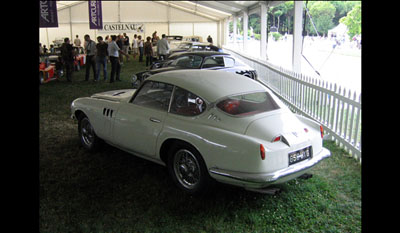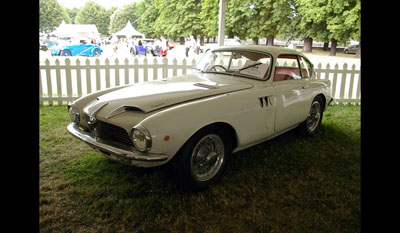Pegaso Z102B Touring Berlinetta and Spyder 1951-1956
The Spanish Sate owned Company ENASA (Empresa Nacional de Autocamiones Sociedad Anonima) was dedicated to the production of trucks and buses suitable for the reconstruction of the country after the civil war. This Company was indeed the result of the nationalisation of the Spanish factory of Hispano Suiza. The Engineer Wilfredo Ricart was employed as Technical Director upon his return from Italy where he had worked seven years as a Consultant at Alfa Romeo. The ill-fated mid-engine Formula racing Alfa Romeo 512 was one of his last jobs in Italy. This car was the highest point of conflict with Enzo Ferrari. As a result Enzo Ferrari decided to stop his thirty years of collaboration with Alfa Romeo and undertake its own manufacturing operation starting with grinding machine tools in order to fulfil a four year contractual prohibition to get involved with car production. This restriction was part of his contract with Alfa Romeo.
Wilfredo Ricart wanted to undertake the production of grand touring sports cars. The economic situation was not the most opportune. He decided to convert an internal training section to initiate this activity while officially preparing young engineers and technicians for the production of trucks and buses. The training centre comprised well qualified and experienced senior professors selected and employed by Wilfredo Ricart. The job was started with the preparation of a sophisticated four overhead camshafts V8 with dry sump lubrication. The engine was made of light alloy metal and the first editions had a 2.5 Litre capacity that would later move to 2.8 and 3.2 Litre. Power out put was claimed at 160 hp.
In 1951 two cars were completed, a coupe and a cabriolet. The front V8 engine power was transferred to the rear wheels by transaxle mounted five-speed gearbox with inboard drum brakes. The car was called Pegaso Z 102. The Pegaso Z 102 will indeed be produced during six years and nearly one hundred thirty were completed in this period.
The great majority of the components for the Pegaso Z 102 were manufactured under strict quality control at the Pegaso Training centre. The car was designed while taking into account the rough conditions of the roads in Spain at the time. The quality of the gasoline available at the gas station also imposed low compression ratio of 7,8:1. The chassis was a strong platform reinforced with body elements. Rigidity was preferred over weight. The first two Pegaso Z102 were exhibited at the 1951 Paris Motor Show. The Pegaso Z102 and Z102B received different bodyworks either prepared at the factory of by specialist coachbuilders like Saoutchik in France or Touring in Italy. The majority of the eighty six Z102B models received a coupe berlinetta body prepared by Touring. This car had very attractive style but its cost was expensive because of the custom duties at the time between Spain and Italy; the chassis had to be exported to Italy and then imported into Spain and these custom cost nearly doubled the price of the car. The kerb weight was quoted at 1370 kg (2750 lbs.). for a wheelbase of 2340 mm (91.5 in). The V8 engine of the Pegaso Z102B Touring Berlinetta had 2814 cc capacity with bore and stroke 80 mmx 70mm and produced a claimed a maximum output 170 hp at 6300rpm and a maximum 160 lb/ft torque at 3600 rpm.
 |
 |
| |
|
+ In 1953 two supercharged roadsters were prepared with Touring body and intended for competition. The racing activity was short lived because of extreme weight and a crash during practice for Le Mans 24 Hours. The factory then withdrew participation to the race. Other Pegaso were entered in different competition events but with limited success.
The Pegaso Z102 B was produced till 1956 when a new model Z103 was introduced with 4.2 Litre engine.
Only three Z103 were produced before this activity was interrupted. Wilfredo Ricart quit ENASA in 1957.
There are still today a quantity of well preserved Pegaso and they are participating with success at Concours d’Elegance like Pebble Beach.
wallpaper of the Pegaso Z102B Touring Berlinetta and Spyder 1951-1956 (click on images to enlarge)
Related reviews :
|